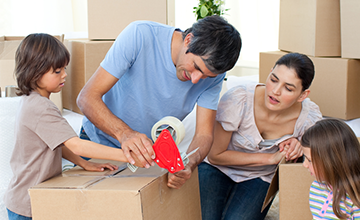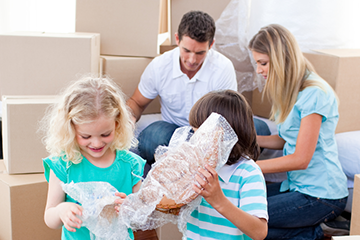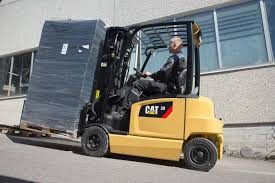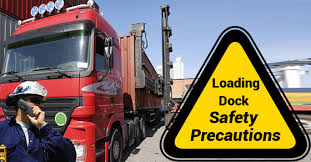How Much Does a Removal Company Cost?
Example of Average House Removal Costs
The table below provides a full breakdown of the average house removal costs for a 3-bedroom property moving 50 miles away. It includes the removal company cost, cost of packing boxes and a dismantling and reassembling furniture service.
Average Removal Cost Based on Size of Property
Below are the average removal costs for different sized properties that are travelling 50 miles and 150 miles. The cost of a removal company will vary depending on the company you use, the distance travelled and any additional services you need.
Pre-move Survey
Once you’ve received your removal quotes from Compare My Move’s verified removal partners, they should offer you a free pre-move survey at your home. This will allow them to confirm the quotation, discuss any special requirement you have and check the access and parking arrangements for their vehicle.
How are Removal Costs Based on Distance Travelled?
A removal company will charge less for relocating in the local area than they would do for moving across the country or overseas. The further distance you move, the more you will pay. A recent survey of our partner network showed that some removal companies charge at an hourly rate, while others break down costs on a mile by mile basis.
Most removal companies offer a part or full packing service to help you with the move. The service will include visiting your house before the move and professionally packing your belongings, loading on to the van and unloading at the new house.

Removal Service
What moving services do we offer
We want to ensure your move is as stress-free as possible, so our removal service can be adapted to your needs. Our packing service makes life a lot easier, but we also supply free packing materials if you do want to do the packing yourself. The movers can also take care of dismantling furniture. Storage is also available for as long as you need it, even if its just overnight. Our storage rates are very competitive. We are one of the few removal companies who offer free transit and storage insurance
Our storage rates compare very favourably with our competitors, partly due to our large storage capacity and having everything in the one place. We can operate efficiently with fewer warehouse staff and fork trucks by having just one facility. The overall cost of your removal is mainly based on the time it takes to pack, load and unpack your belongings. The fuel and travelling time costs are relatively low. Cost is an important factor when moving, but our customers also value, reliability, experience and the ability for us to adapt our service to their needs.
The reason for a family move is often a deeply personal and emotional one. Moving during a difficult family time can take an especially hard toll on your family. Throughout this guide, we consider your family every step of the way and provide advice on ways to help all prepare and cope with the upheaval.
Taking your time to plan your move week by week, hour by hour and box by box in advance is easier said than done. This is particularly challenging when you are trying to run a household as well as juggle work with your three and five year old. The way you approach your move will depend on the moving circumstances and the help or resources at hand. We give you practical tips to help you successfully organise and pack up your family life ready for the big day.
Using our experience and research we have gathered together some useful tips, advice, and things to consider for your family on moving day. Keeping some key pointers in mind for your moving day will help you support your family and tackle each hurdle as it comes

Clearance Guide
Clearance definition
clearance is generally defined as the loading and removal of bulky waste from a property by a man & van crew. The service covers collection of waste from anywhere on the property, loading it into a truck, sweeping up any loose material, and delivering the waste to a licensed disposal facility. Rates are based on the volume of waste removed and cover the labour, transport and disposal fees.
Who provides clearance?
Every council is obliged to offer a subsidised collection service for bulky household items to its residents. Some offer this for free, but most charge – and in recent years those charges have steadily risen. The service is normally restricted to furniture, appliances and other household ‘junk’, rather than builders and home improvement waste. This is because the latter is considered ‘trade waste’ and not something the council should subsidize. Service levels tend to be pretty basic so you will often have to wait a week or so for an appointment and all items must be placed outside. Nonetheless it is normally cheaper than a private service, so if you don’t mind the inconvenience, it’s definitely worth checking your local council’s website to see what they offer.
Private waste companies, although likely to cost more than the council, take the full range of bulky waste (rather than just household junk) and, unlike council crews, their teams will collect from anywhere on the property (including upstairs and the back garden). Plus they will be available at much shorter notice and offer narrow arrival times, so you don’t need to wait around all day. Prices of one man bands may be cheaper than larger, professional organisations
Waste types – what bulky waste types can be removed?
Bulky waste means in the context clearance any non-hazardous waste that can comfortably be lifted by two people. This includes builders waste, fly-tipped waste, bulky appliances (including domestic fridges), furniture, bric-a-brac, carpet, plasterboard, garden waste and household junk. For waste licensing, health & safety and insurance reasons, most firms will not remove the following hazardous items:
Asbestos (read our guide on safe disposal of asbestos)
Batteries
Clinical or medical waste, including syringes
Fluorescent tubes
Commercial fridges, freezers and air conditioning units
Gas canisters and gas bottles
Hazardous & toxic materials
Oil, petrol, diesel
Paint & Cans of paint
Tyres
Weight restrictions – do I need to worry about how heavy the waste is?
clearance firms typically don’t like and aren’t best suited to jobs with lots of very heavy demolition or excavation waste like soil, rubble and cement (often referred to as ‘inert waste’). This is because their collection vehicles are usually light goods vehicles. Light goods vehicles, although cheaper and easier to run than heavy goods vehicles, must by law never weigh more than 3.5 tonnes.
Removals Training from the Experts
House Removals
Whether you are moving across town or to a different city or continent, finding a reliable removal company will be essential to ensure your house move runs smoothly.
vast experience of the entire removals process makes us the best choice when deciding on a home moving provider. We fully understand that no two moves are the same. That’s why our fully personalised approach to removals has made us one of the most popular choices for moving home.
National Home Movers
Whether you need to insure your expensive items during the packing process or need additional cover for international removals
Why Choose?
If you’re heading from a city apartment to a suburban house, or from the quiet countryside to the centre of a metropolitan city, has the experience and expertise to provide you with exceptional service when moving home
There’s no obligation to proceed yet you’ll quickly discover that our removals company service is offered at a highly competitive price.
Frequently Asked Questions
What is a Bill of Lading or BOL?
A Bill of Lading is a contract between you and for the transportation of your household goods. It will include your name, origin and destination address, equipment information, and other information important to your move. We will mail, email or fax a copy of your BOL before your move, so you’ll have the opportunity to review the details and terms and make sure everything is correct. If you have questions or need to make changes before moving day, just give us a call.
You Pack.
Take control of your move from the start by packing exactly how you want! No waiting for a crew, and no wasting time packing items you don’t need. The best part? The ability to pack your own things can help you save money! The less space you use, the more you save.
You Load.
Place your items in the moving equipment and secure them for transit. You get up to three business days, so no need to rush. Need help with this part? We’ve got you covered
We Drive.
Let us know when you’re finished loading, and we’ll come get the equipment. No need to stick around — you won’t need to sign at pick-up. You’re free to start traveling to your new home. Stop when you like and get a good night’s sleep. Your belongings are in good hands.
What is the best way to pack and load?
Use quality packing supplies and these packing tips, loading tips and moving videos to help make sure your belongings are packed and loaded properly for a long distance move


